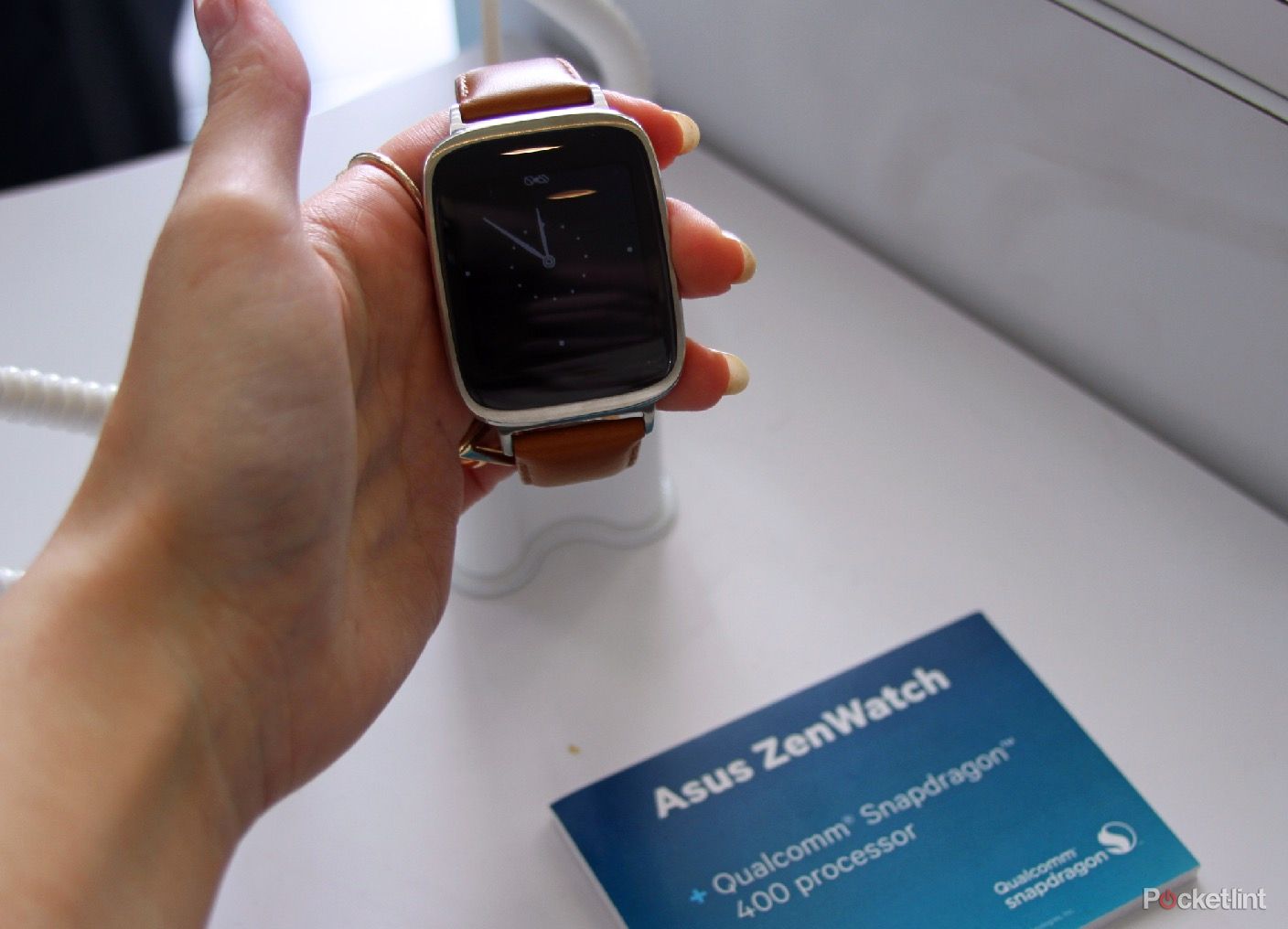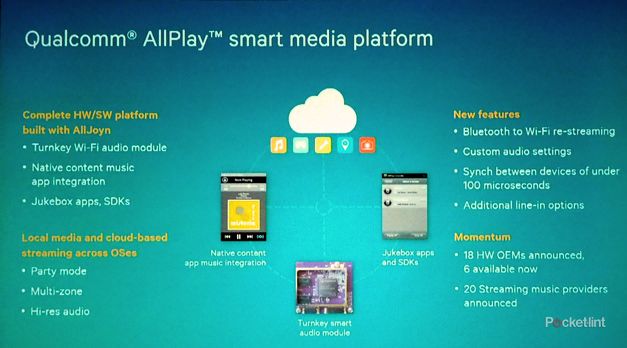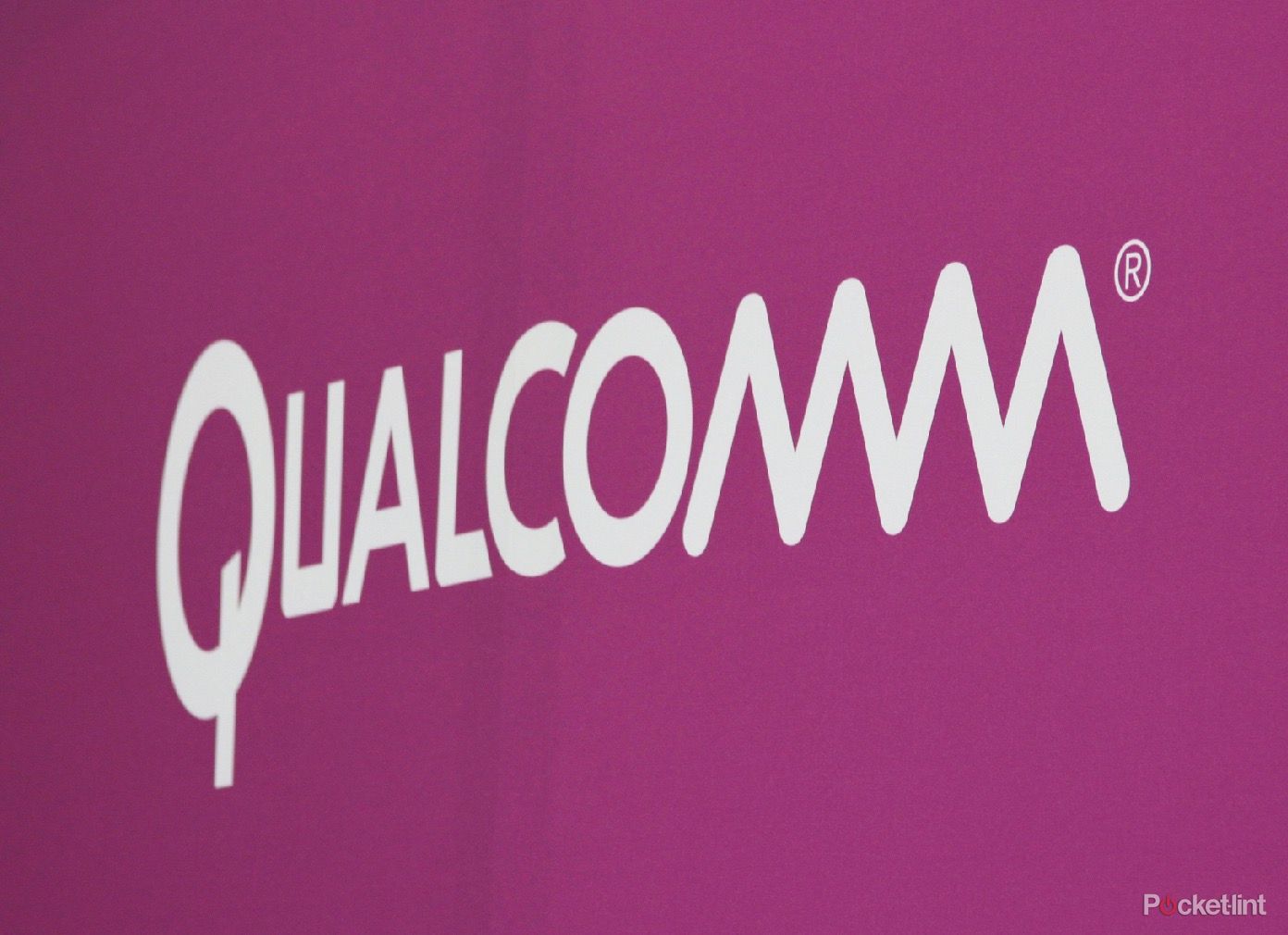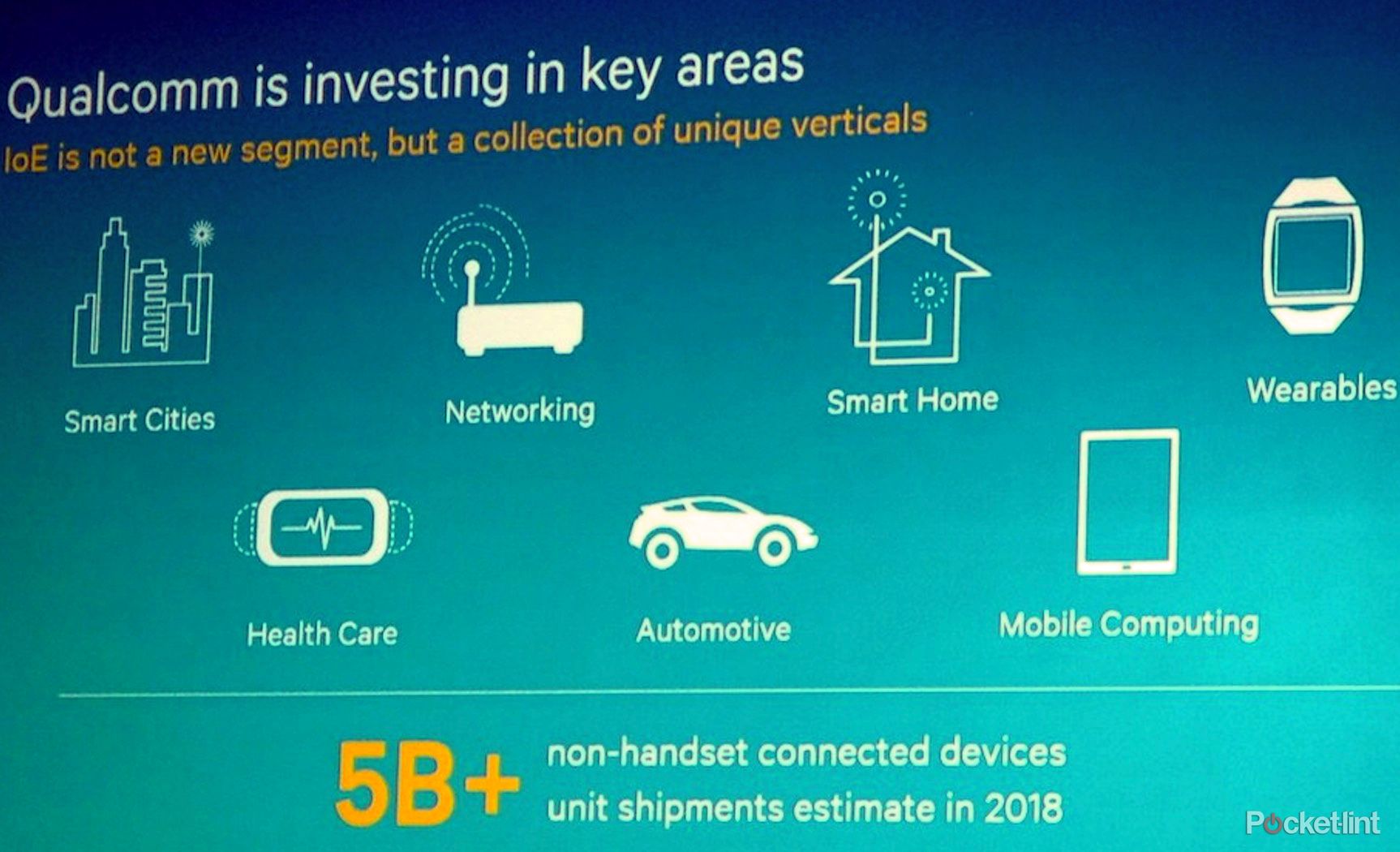The Internet of Things is a complex concept to grasp.
Firstly, it's called several things, including the acronym IoT and even the Internet of Everything (or IoE). It is also confusing because it's far-reaching and involves a mesh of technologies. But one company - Qualcomm - has an agenda to simply things for manufacturers as well as spearhead the movement until it's fully adopted in homes, wearables, automotive, cities, and health care segments.
San Diego-based Qualcomm, which sees most of its revenue come from the smartphone market (it is known for fabricating Snapdragon processors and other silicon), hosted an event in San Francisco this week to outline what it has to offer and how it plans to get more of its hardware and software into internet-connected gadgets, such as light bulbs, washing machines, cars, and medical devices.
READ: The Internet of Things explained
Why is Qualcomm going after IoE?
Qualcomm isn't the first technology company to tackle the Internet of Things. Samsung and Intel and others, for instance, each have their own initiatives, platforms, and strategies, but Qualcomm believes it has a leg up on the competition because it's already performing well in the market.
During the fiscal year that ended in September, Qualcomm generated about $1 billion from businesses other than smartphones. Its chips were in 120 million smart home devices last year (and that doesn't include the 20 million cars or 20 wearables that also use Qualcomm silicon). As for the current fiscal year, Qualcomm predicts 10 per cent of its chip revenue will come from non-smartphone devices.

“Qualcomm is well-positioned to provide the most advanced connectivity, computing and interoperability for devices and machines in smart homes, automobiles, wearables and smart cities. Our technologies are already driving this new era of intelligent connectivity and computing, and we will continue to invest in these emerging segments," said Derek Aberle, Qualcomm's president.
Aberle noted that Qualcomm started 30 years ago by developing connectivity for trucks, and revenue from that business helped it to get into cellular modems, which is now a huge business for the company. The anecdote helped illustrate Qualcomm's current position: revenue and technology from its Snapdragon chips for mobile phones is helping it to invest in the Internet of Things.
Similar to how it embraced cellular modems early on, the chipmaker now sees a huge opportunity in the Internet of Things market (but it doesn't like the phrase "Internet of Things" and instead prefers to use "Internet of Everything"). According to Qualcomm's research, more than 5 billion non-smartphone connected devices are expected to ship by 2018...and it wants a piece of the pie.
How will Qualcomm progress IoE?
New Wi-Fi solution chips

As part of its investment strategy, Qualcomm announced while in San Francisco that it will continue to deliver tools and solutions that allow manufacturers to create premium connected experiences in a variety of places, including homes, businesses, cars, and cities. It has new processors up its sleeve, for instance, as well as cellular, Wi-Fi, and Bluetooth wireless communications.
Qualcomm's Atheros unit showed off two circuit boards equipped with processors, memory chips, wireless communications, and software. The first Wi-Fi solution chip, called the QCA401x, can make low-power Wi-Fi devices (like light bulbs) smarter. It pairs to a microcontroller with WiFi 1x1n and allows for a variety of input/output options like sensors and displays. It has 800KB of storage, too, for local apps.
The other one, called the QCA4531, is the more advanced chipset. It's Linux-based and meant for hubs - handy devices from manufacturers that allow multiple devices to communicate with each other as needed. In addition to WiFi 2x2n, it enables hubs to support up to 16 devices at once. Qualcomm's QCA401x will hit production later this year, while the QCA4531 is alread shipping to appliance manufacturers.
Security features are also built into Qualcomm's products, chips, and software, making it difficult for hackers to access data on devices remotely. The whole idea is to make internet-connected devices even more intelligent, and by doing so, maybe more of the the computing can be done on the device instead of up in the cloud, which could reduce latency, among many other things, Aberle explained.
Keep in mind most IoT topology involves hubs or end-point devices that handle data and pipe it to the cloud, but Qualcomm is considering ways of allowing end points to communicate over a mesh network, which would speed up communications. It’s also working on making the end points more powerful, so that they would not only be aware of what's around them, but also be able to understand context.
New ecosystem providers
Qualcomm plans to dominate the Internet of Everything through new chips as well as through new partnerships. In order to deliver some cloud and software services, it has announced six new partnerships with Ayla Networks, Exosite, Kii, Proximetry, Temboo, and Xively by LogMeIn.
Qualcomm will integrate these partners' software directly into their connectivity solutions, and in return, the providers will support Qualcomm Atheros' Wi-Fi-based intelligent connectivity platform. This will further simplify the development of devices that use Wi-Fi to connect to the IoE by increasing cloud service flexibility and making these solutions available in a broader global reach, Qualcomm said.
AllPlay expansion

Apart from new chips and software partnerships, Qualcomm is improving connectivity functionality in at least one of its existing products. The company has announced it is expanding the AllPlay smart media platform, which allows AllPlay-certified speakers from various audio brands, such as Monster, to work together seamlessly and connect to music streaming services.
The platform now supports something called "Bluetooth to Wi-Fi re-streaming", with the purpose of allowing you to stream all local or cloud-based music on your smartphone to any Bluetooth-compatible AllPlay speaker, and then re-stream the music over Wi-Fi to multiple AllPlay speakers. It's an obvious advantage over Bluetooth-only speakers, which are limited to one-to-one streaming.
Qualcomm said the re-stream will of course be in sync (it'll sync between devices within 100 microseconds, in fact). To complement the expansion, manufacturers will also be able to build AllPlay devices that take in audio from line-in sources like CD players, enabling those devices to re-stream line-in audio to other AllPlay speakers around your home.
In addition to these platform advances, Qualcomm said new AllPlay products are coming from Hitachi, ASUSTeK, Vestel, and Magnat. They'll launch later this year with support for the new AllPlay features, where as Panasonic and Monster already use it in some of their products.
What else does Qualcomm have planned?
Cars
During Qualcomm's San Francisco event, it talked a lot about how it has developed technologies that are driving the Internet of Everything in more areas than just your home, including powering in-car experiences with embedded 3G/4G solutions for automobiles. Qualcomm said it's even worked with more than 40 connected car programs from more than 15 OEMs.
Cities
Qualcomm also has its sights set on bringing the Internet of Everything to cities. It's helping cities modernise while also reduce operational costs by providing them with new solutions that tackle everything from buildings and energy to infrastructure and transportation. The company was a bit vague, as it is still in early-days territory, but it claimed to be involved in more than "20 active engagements" in key areas.
Health Care
Qualcomm is also going after Health Care but looking beyond wearables that track your steps. It has platforms, such as 2net and HealthyCircle, currently used by over 500 hospitals and partners, including Cerner, AMC Health, Roche and Walgreens. They're not only designed to help partners adopt connected health solutions, but they'll also provide chronic disease patients with care management tools.
"These technologies allow secure and reliable sharing, transmission, and cloud-based storage of health information. By liberating vital health and biometric data, Qualcomm is developing solutions that enable continuous care, informed interventions, and better management of at-risk populations," Qualcomm explained, adding that it'll be a new way of connecting devices and leveraging biometric data.
Want to know more?
Pocket-lint's Qualcomm hub has all the latest and breaking news from the company.



